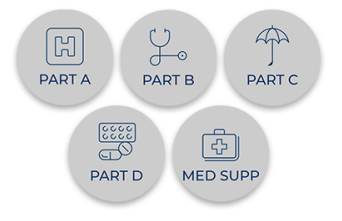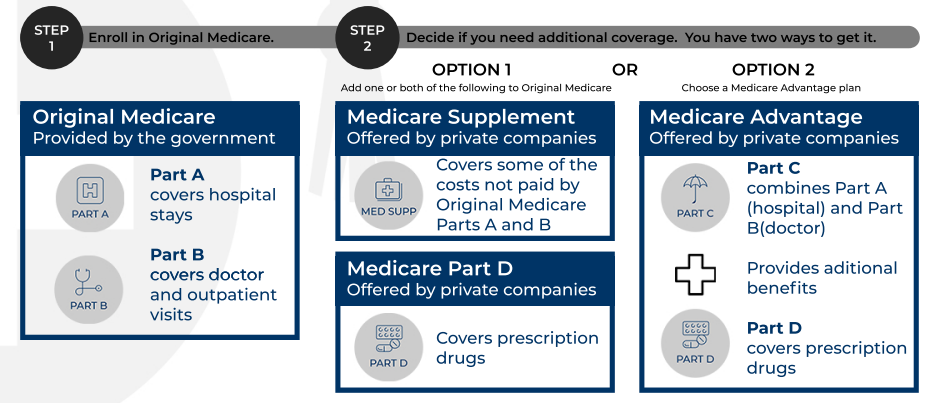Medicare 101
At first glance, Medicare can seem quite confusing. Having a solid foundation of knowledge on the most basic parts of the Federal Healthcare program can assist in making an educated decision when it comes to managing your benefits
Building Blocks of Medicare
Medicare health coverage has five parts that you need to know about.
- Part A - inpatient hospital and facility benefits.
- Part B - physician and outpatient benefits.
- Part C/Medicare Advantage - a combination of Part A, Part B, and sometime Part D.
- Part D - prescription drug coverage; and Medicare Supplements, to fil in the gaps of Parts A and B.

Medicare Eligibility
To be eligible for Part A and Part B, also referred to as “Original Medicare”, you must be a U.S citizen or legal resident for at least 5 consecutive years AND one of the following: age 65 or older, under 65 with a qualifying disability, or any person diagnosed with end-stage renal disease or ALS (Lou Gehrig’s Disease).
Gaps in Medicare
While Medicare Part A and Part B provide great financial protection, there are still gaps in the coverage you need to be aware of. Both Part A and Part B have premiums, deductibles, and cost sharing for services with no out-of-pocket limit, and can have limits on services or items that would not be covered.

Healthcare Coverage Options
To cover the gaps in Medicare Part A and Part B, there are a few options you can consider.






